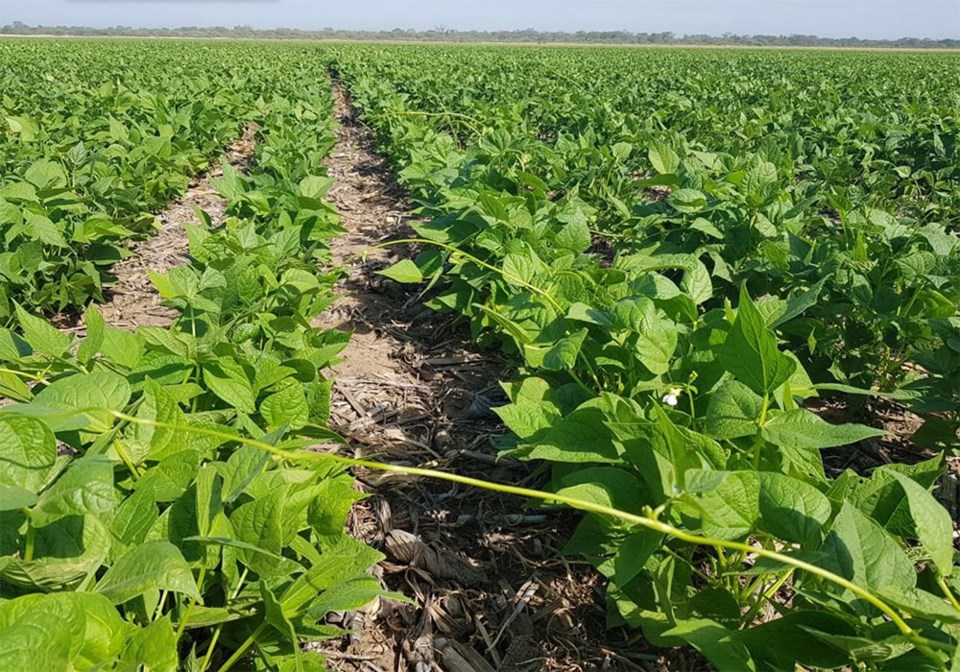WESTERN PRODUCER — One of Canada’s key dry bean competitors will be less active in export markets in 2023-24.
Horacio Fragola, a trader with Alicampo, told the Global Pulse Confederation (GPC) that Argentina is experiencing the fourth consecutive year of drought.
There wasn’t enough rain for many farmers to plant pulses during the ideal seeding window between Feb. 15 and March 15.
He estimates 40 percent of the crop was planted during that period. Those seeds didn’t get the water they needed and are unlikely to yield well.
“Everything that was planted in that February-March window suffered a lack of water, and everything seeded later is running the risk of frosts when the harvest comes,” Fragola told GPC.
About 30 percent of the crop was planted in the last 15 days of March and the final 30 percent was planted during the first 15 days of April.
He said those plants appear to be in good shape, but many will be harvested in June and July, which is the middle of winter in Argentina and carries a high risk of frost.
Fragola said production losses could be severe.
“I believe we’re going to have a harvest of roughly 50 percent of what we should have, which is very little,” he said.
Argentina typically produces around 500,000 tonnes of beans, making it one of the key players in global markets. Farmers there mainly grow black and alubia (white kidney) beans.
John Ferguson, owner of Ferguson Bros. of St. Thomas Ltd., said Argentina also exports cranberry beans and a fair amount of dark red kidney and light red kidney beans.
“Their biggest market is Brazil because they can trade easily into Brazil,” he said.
They also ship a lot of beans to Mediterranean countries in the European Union.
He said they will be short on black and alubia beans, but he has heard they will still have a lot of cranberries to sell.
Statistics Canada estimates Canadian farmers planted 257,000 acres of beans, a 14 percent drop from last year.
Ferguson said that sounds about right. Farmers cut back on most varieties, except for black beans because of strong demand for that product.
He believes kidney bean planting is likely down 10 to 25 percent across North America because of a large carryover from last year.
Kidney beans are used in bean salads. Consumption of bean salads plummeted during COVID because there were no weddings, reunions and funerals.
“The market has been driven down to the point where guys just aren’t growing them now,” said Ferguson.
In general, COVID took a toll on the consumption of many types of beans.
“All the buyers will tell you that everybody is long,” he said.
“It’s not like we’re teetering on running out before the new crop gets here.”
Bean prices remain flat despite the problems in Argentina. Buyers are trying to offset the rising costs of cans, cardboard and labels by buying beans as cheaply as they can.
“It’s always the farmer that takes the hit,” said Ferguson.
The United States Department of Agriculture estimated that farmers in that country planted 1.23 million acres of beans, a two percent decline from last year.
Ferguson said bean growers in Michigan are concerned about the dry conditions, just like corn and soybean growers in many parts of the U.S. Midwest.
“It’s coming to a critical point soon,” he said.
There are also areas that could use more rain in Minnesota, but most of the large-seeded beans in that state are grown under irrigation.
Ontario’s crop was seeded later than normal. A lot of growers had to replant their crop due to hail damage and crusted soils.
“For the most part (the beans) don’t look too bad, but at the same time a good soaking rain would do them a lot of good,” said Ferguson in a June 23 interview.
Contact [email protected]




